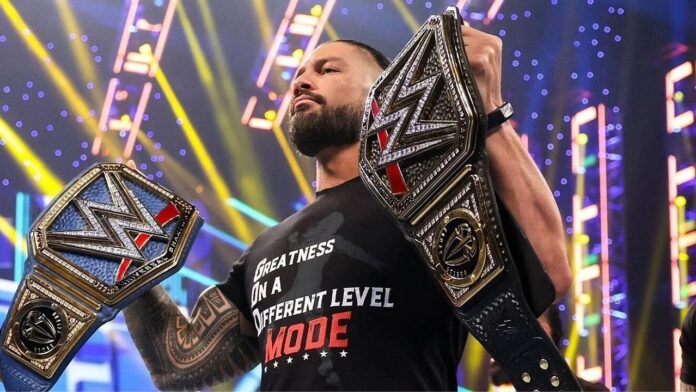WWE’s creative process has undergone a revolutionary transformation under the new regime, with Paul Heyman revealing that the company now maps out storylines spanning multiple WrestleManias – a dramatic shift from the month-to-month booking that characterized previous eras.
In an extensive interview on The Ariel Helwani Show, the legendary manager and creative mind detailed how WWE’s approach to long-term storytelling has evolved beyond anything the industry has seen before, fundamentally changing how major narratives are constructed and executed.
“If I’m sitting in a meeting and we say, ‘Okay, where are we going for next year’s mania?’ Well, we’re going three mania from now because this mania is just the the pathway to the next year’s mania, which is the pathway to the next year’s mania. Long-term story lines is where is where it is,” Heyman explained, outlining the new philosophy driving WWE’s creative direction.
This represents a seismic shift from the Vince McMahon era, where long-term planning rarely extended beyond the next major premium live event. Heyman drew a stark contrast between past and present approaches to creative development within the company.
“So, back then under Vince McMahon, if we could get the conversation to, ‘what’s the main event and and what’s the support in next year’s mania,’ that’s a great long-term meeting.
Today, we can sit here and again, a lot of this has to do with what we did with the bloodline and the creation of the tribal chief Roman Reigns, that we can sit here and say, ‘well what are we doing 3 years from’ now because that’s how we looked at it,” he detailed.
The catalyst for this evolution stems from multiple business factors that have transformed WWE’s operational landscape. The Netflix deal, longer talent contracts, and different network licensing demands have created an environment where multi-year planning isn’t just possible – it’s essential for maximizing storytelling potential and business value.
“It’s not only a regime that is open to it or more open to it. It’s also to me the reality of the industry today in that you can plan out three five years down the road. Wasn’t that way before, you know, and now also there’s longer-term contracts.
We’re signing people for three to five years. Before that wasn’t always the case. It was only the top stars that were getting fiveyear deals,” Heyman explained.
The Bloodline saga serves as the proof of concept for this new approach, demonstrating how patient, methodical storytelling can create unprecedented audience investment and business success. The three-year arc of Roman Reigns’ tribal chief character became the foundation upon which WWE’s current planning philosophy was built.
Heyman emphasized how this long-term thinking extends to talent development and future main event positioning:
“You couldn’t pull me away from Roman Reigns’s coattails unless you showed me the future of this industry. You couldn’t. Why would I ever leave Roman Reigns? Ever. Ever. The GOAT, the the the most transformative performer I have ever worked with in my life.”
The strategic positioning of emerging talents like Bron Breaker, Bronson Reed, and Jacob Fatu reflects this forward-thinking approach. Rather than reactive booking based on immediate crowd reactions, WWE now identifies future main event stars and constructs multi-year narratives to establish their credibility and audience connection.
“Braun Breaker, who to me is the undisputed, uncontroverted future of WWE, a multi-time Wrestlemania main event coming up, let alone Bronson Reed, whose game has elevated like this beyond description to where now everybody is talking about the tribal thief,” Heyman noted when discussing the next generation of WWE stars.
This methodical approach allows for intricate story layering that builds audience anticipation across multiple premium live events. Instead of rushing to payoffs, WWE can now plant seeds years in advance, creating deeper emotional investment when storylines reach their culmination.
The industry implications extend beyond WWE’s immediate creative benefits. This approach sets a new standard for professional wrestling storytelling, potentially influencing how competitors approach their own long-term planning and talent development strategies.
For WWE fans, this evolution promises richer, more satisfying narratives that reward long-term viewing investment while creating appointment television that extends far beyond individual matches or monthly events into true multi-year epics.

